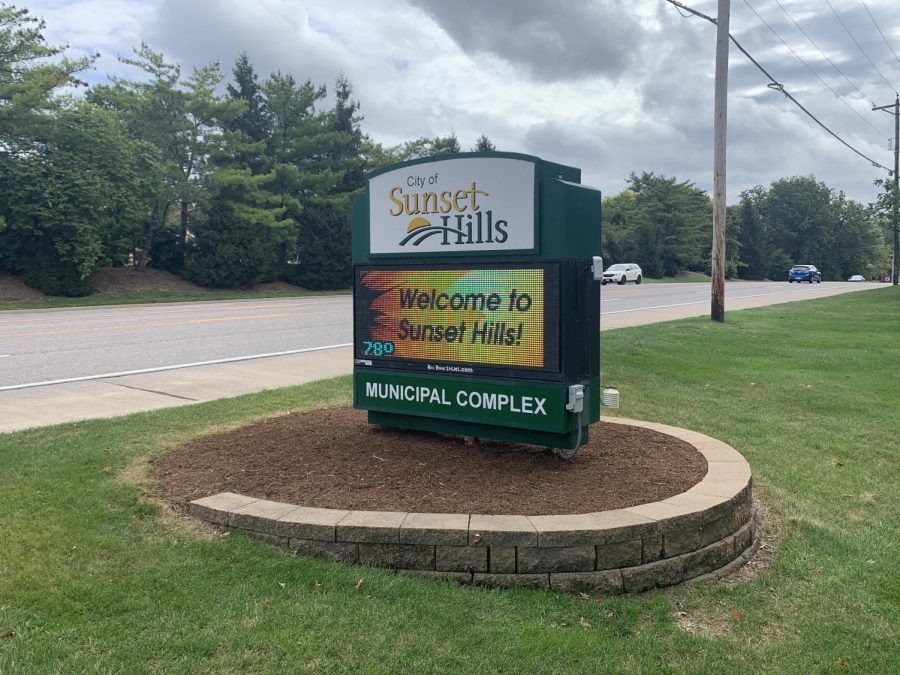By SCOTT MILLER
Staff Reporter
Lindbergh School District homeowners may pay more if they reject a 65-cent tax-rate hike in the April 5 election, says district Chief Financial Officer Pat Lanane.
A reassessment year with unusually high increases to residential property values, coupled with a new system of collecting county taxes, will place more of the tax burden on homeowners, he said.
If voters approve the tax-rate increase, called Proposition A, it would distribute the increase equally between residential, commercial, agricultural and personal property tax rolls, the assistant superintendent for finance told Board of Education members last week.
If not, state law would allow the Board of Education to increase the residential property tax rate to collect the $3.2 million that Prop A would have generated. But homeowners would be paying much more of the bill, Lanane said.
“Why is that so much more? It’s so much more because you don’t have any help from the commercial (rate),” he said. “You have no help from the agricultural. You have no help from the personal (property). There’s no way to get any more money out of those categories (without a tax-rate increase).”
The entire scenario is contingent on a 20 percent hike in residential property assessments, which is likely, Lanane said, referring to conversations with county officials.
Commercial, agriculture and personal property tax assessments are not expected to see such increases, however.
“This is the first reassessment under the new tax structure where you now have four tax rates, a residential rate, a commercial, an agricultural rate and a personal property rate,” Lanane said. “It used to be one big rate. Now they’ve separated into four, and each category balances within itself.”
By law, the taxes school districts can collect from tax-base growth are capped at 5 percent or the Consumer Price Index, whichever is less. If growth exceeds the CPI or 5 percent that year, school districts refund the taxpayers by rolling back the tax rate, a requirement of the Hancock Amendment.
If residential assessments are the only properties raised at rates as high 20 percent, the residential tax rate will be the only rate driven down significantly because it would be the only growth far ex-ceeding the CPI.
While the rate is lower, the taxes collected will be slightly higher than the previous year because the tax base has increased. Plus, if the Hancock Amendment dramatically drops residential property tax rates, the Lindbergh Board of Education has a legal route to increase the rate.
A 20 percent assessment increase would roll back Lindbergh’s residential tax rate from $2.70 to $2.27 per $100 assessed valuation, Lanane said.
“We’d still collect the same amount though,” he said.
And Missouri law gives school districts the authority to raise their rate to $2.75, so Lindbergh could increase the rate without voter approval and draw from a much larger pool of residential property taxes, meaning higher tax bills for homeowners.
“A school board is legally entitled to raise the rate to $2.75 whenever the rate is below it,” Lanane told the board. “So the board would have the legal authority to raise this rate to $2.75. That’s the legal minimum.”
Schools must meet that $2.75 minimum or the state will strip away funding. Because Lindbergh receives the same per-pupil aid from Missouri each year, the district wouldn’t lose state revenue but still has the authority to raise its rate to the $2.75 minimum. That authority trumps the Hancock Amendment, Lanane said.
Lindbergh’s Board of Education, meanwhile, has vowed to only take 32 cents the first year if the voters approve the 65-cent tax-rate increase. And that increase would be distributed among all tax rates, not just residential.
“Voter-approved tax increases are approved equally to all categories, so if Prop A passes, 32 cents will be added to the residential, commercial, the agricultural and the personal property. All get the 32 cents. That’s the rule, not my rule, the state’s rule,” Lanane said.
“So let’s look at what happens if Prop A passes with an assessment increase of 20 percent,” he continued. “The rate is re-duced per Hancock Amendment to $2.27. The tax-rate ceiling is increased by 65 cents. So now we would have authority to go 65 cents above that. But we’re not doing 65 cents, we’re doing 32. So the $2.27, you add the 32 (cents), you’re at $2.59. The cost to the homeowner for $100,000 assessed value is $60.80. You’re rate would be raised 32 cents and that’s all because 32 cents is enough. It’s not just the residential. It’s also all these other individual categories so we’ll be getting (new) money from four sources, not one.
“Prop A does not pass,” Lanane continued. “If it doesn’t pass you’re still going to have this assessment increase. Rate is reduced to $2.27. That doesn’t change: 20 percent is 20 percent. The board then will be faced with a very hard dilemma. If they want to raise the same amount of money Prop A could raise — about $3.2 million — then the equalized rate increase would be 65 cents.”
But that increase could only apply to the residential property tax rate.
If the board didn’t raise the residential rate to generate money lost by voter rejection of Prop A, classroom expenses would be cut, Lanane has said, and Lindbergh residents, through a community survey and public hearing, have said that should not happen.
“If Prop A passes, the cost to residential taxpayers (with a home assessed at $100,000) would be $60.80,” Lanane said. “If it does not pass and a (board approved) roll up occurs, it could be $83.60.
“But think about it,” He continued. “It will be less expensive (for homeowners) if Prop A passes under a 20 percent increase in assessed value, and we believe that’s going to happen. This is the most unusual scenario in taxing I have ever seen.”
A study by the University of Missouri-St. Louis found county residential property values under assessed by roughly 20 percent.
Citing that study, the State Tax Commission of Missouri sent a letter in October to county assessor Phil Muehlheausler, suggesting assessments be brought up to the fair market value.
“There was a study done that says St. Louis County was under assessed by about 20 percent,” Lanane said. “That study has been sent to the state tax commission. The state tax commission has issued a letter to St. Louis County, saying ‘get your assessments up where they’re supposed to be.’
“Two or three weeks ago, we were called into the Cooperating School Districts’ meeting room and the Chief of Staff (Jim Baker) for (County Executive) Charlie Dooley was there, and he confirmed that the increase is higher than he anticipated it would be,” Lanane continued. “I asked him how much it would be. He hedged. I asked him: ‘Twenty percent?’ He kind of didn’t answer that question, so I kind of took his ‘no’ answer as maybe.”
When contacted by the Call, county officials did not confirm Lanane’s prediction, however. County spokesman Mac Scott said the tax commission hadn’t mandated anything, saying the county is obeying the law and “assessing properties according to fair market value.” He wouldn’t say if that value would create a 20 percent increase in residential property value assessments, however, but verified that county officials had been meeting with school districts.
The Call obtained a copy of the tax commission’s letter, which did say residential property assessments were 20 percent low and the county should raise them to fair market value. The letter did not contain a sanctioned mandate though.
It the county abides by the commission’s wishes, which Lanane claims is the case, Lindbergh would be in a unique situation because its tax-rate is the lowest in St. Louis County. Its tax rate likely would be one of the only rolled back significantly below the $2.75 minimum by the Hancock Amendment.
“We’re very uniquely positioned because we have such a low tax rate,” Lanane said. “The two districts that (the reassessment) would affect would be Ladue and Lind-bergh. We’re already 5 cents below that $2.75 right now, so I think that speaks volumes about the frugalness and the stewardship that the boards have showed over the past several years.”




















